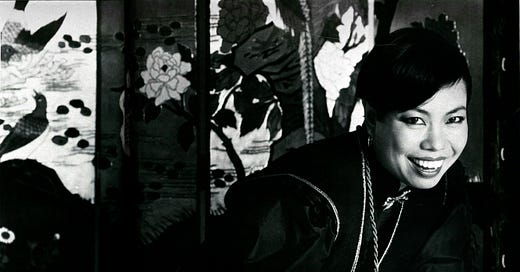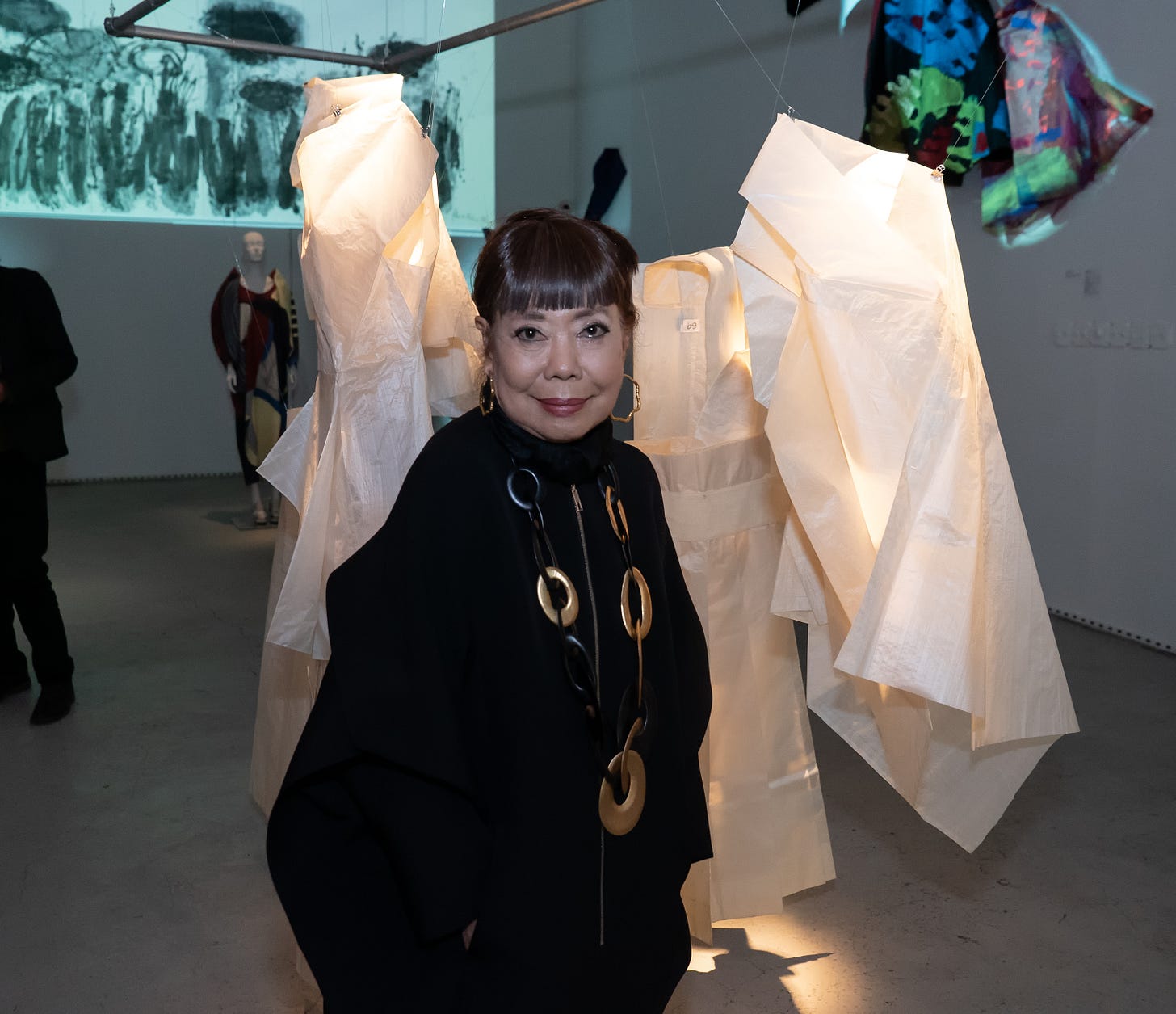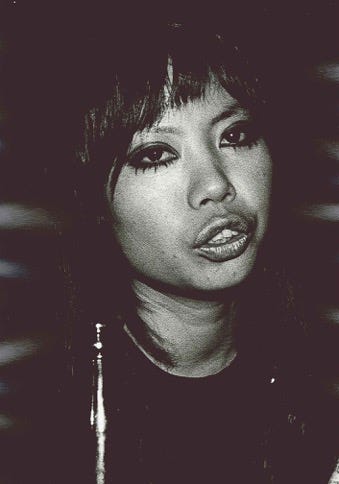In 2018, I was invited to interview (through a translator) the venerable Japanese fashion designer Hiroko Koshino. Though Koshino has been designing since the 1960s and began showing internationally in the 1970s, there is a dearth of information online about her work in English. As the website I wrote this for is no longer running, I thought I would share this article with you—hopefully introducing her oeuvre (which reaches far beyond fashion) and process to a larger audience.
Koshino’s 1978 collection, shown at Alta Moda in Rome, is particularly swoon-worthy—make sure to scroll all the way to the bottom to see the 23-page editorial of it from Harper’s Bazaar Italia.
The 1970s proved a pivotal period for the emergence of Japanese fashion designers in the West. It was only in the post-WWII years that Western-style dress (composed of tailored garments) became popular and more accepted in Japan, gradually taking over from traditional indigenous garment styles (the flat cut-and-sewn shapes of kimonos and robes). This led to a shift in fashion design education, which by the late 1950s and early ‘60s was teaching students a blend of the two styles. What manifested was a design worldview like no other—several generations of designers who fused East and West silhouettes, fabrics, and construction techniques in wholly original ways. The first Japanese designers to make an impact were Kenzo Takada and Issey Miyake. Kenzo moved to Paris in 1964 and opened his first boutique there, Jungle Jap, in 1970, while Issey Miyake (after working for Givenchy and Guy Laroche in Paris and Geoffrey Beene in NYC) set up his design studio in Tokyo in 1970 and showed a prêt-à-porter collection in Paris in 1972. Many of the now most renowned Japanese designers made their entrée into the European and American scenes in the 1980s, after starting their careers in Tokyo—Rei Kawakubo’s Comme des Garçons first showed in Paris in 1981, as did Yohji Yamamoto; Matsuda opened a Madison Avenue boutique in 1982. Alongside them was Hiroko Koshino—though less remembered internationally than her contemporaries, she showed in Alta Moda in Rome in 1978 and in Paris from 1982 to 1993. Hiroko Koshino: A Touch of BAUHAUS, a series of two exhibitions curated by Kyoko Sato showcasing Koshino’s fashion designs and paintings at WhiteBox in New York in the fall of 2018 sought to reintroduce Koshino to the American public and reestablish her as a key member of Japan’s fashion vanguard.
Apparel was Koshino’s family’s lifeblood. Her grandfather was a traditional kimono maker while her parents made western-style clothing—her father was a tailor and her mother owned a women’s boutique that produced made-to-order clothing. Born in Osaka in 1937, Koshino and her two younger sisters (Junko and Michiko) were groomed to continue the family business. She learned to sew at a young age but as a teenager found herself increasingly interested in art, particularly in drawing anime. Her parents would not allow her to study art but while studying at Bunka, the top fashion college in Japan, Hiroko discovered fashion illustration which helped her bridge the gap between her parents’ expectations and her own desires. An illness kept her bedbound at her childhood home for six months, providing her with a novel and intensive study period during which she practiced her drawings all day long—experimenting and refining her artistic fashion vision over the course of thousands of illustrations. By the time she was well enough to go back to college, Hiroko had become such an expert illustrator that she began teaching it.
Keep reading with a 7-day free trial
Subscribe to Sighs & Whispers to keep reading this post and get 7 days of free access to the full post archives.





